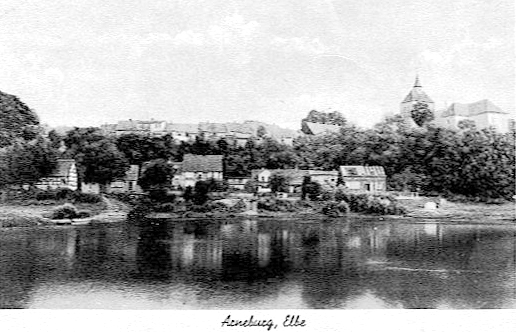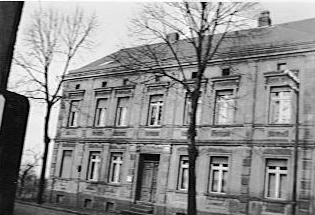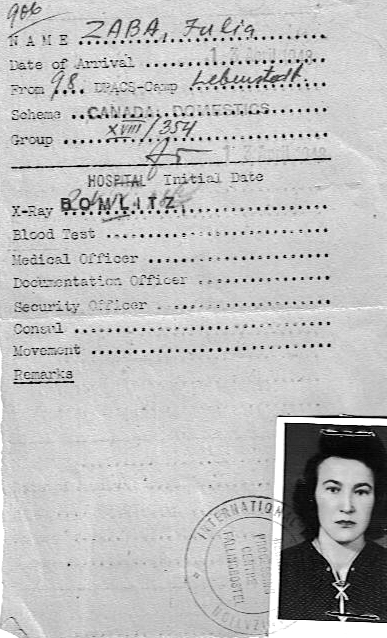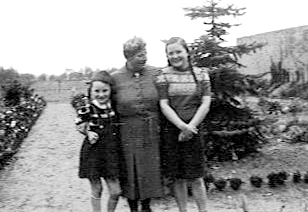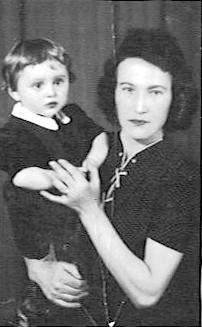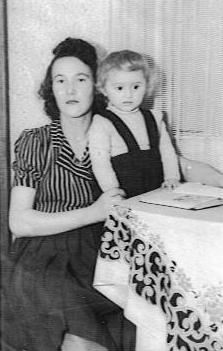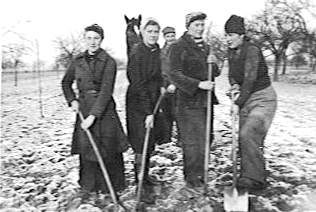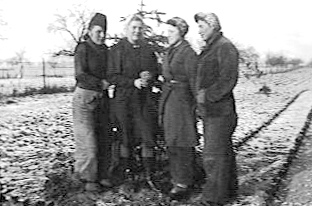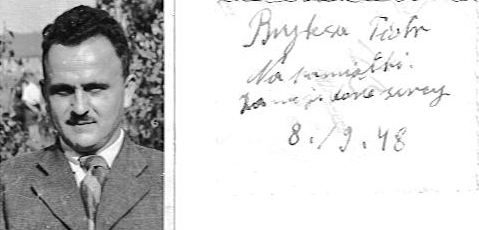Lebenstedt was a civilian workers camp - Zivilarbeiterlager 18 of the Hermann Goeringwerke was here, 17 was situated towards Bruchmachtersen and 27 towards Heerte, see Watenstedt (Zukerfabrik (sugar factory) had 80 workers).
See Searching the British Zone
Lebenstedt was a zivilarbeiterlager (civilian work camp) in the British Zone; No. 18 of the Hermann Goeringwerke (factory) was here; 17 was situated towards Bruchmachtersen, and 27 towards Heerte; See Watenstedt Zuckerfabrik (sugar factory) with 80 workers (Arbeitsamt Helmstedt). http://resources.ushmm.org
Near Salzgitter (this might be a good archive to search). "More than six decades are carved in marble and cast in bronze in the centre of Lebenstedt. Salzgitter's landmark, the Monument to the Town's History, was created by the Brunswick sculptor Professor Jürgen Weber and publicly dedicated in 1995.Unique in contemporary art, the Monument encapsulates the memories of the way the industrial area and the town were built up during the Nazi era and forced labour was used in the Reichs Works. It is also a memorial to the suffering and death of innumerable people fleeing from the former German eastern territories at the end of the Second World War; to the dismantling of industrial facilities by the allies after 1945 and the workers' resistance but also to the development of an economic area into Lower Saxony's third largest industrial site." http://vvs-salzgitter.de
Salzgitter was founded in 1942 by pooling together 29 already existing
villages. Two more were added in 1974.
These 31 villages still form the quarters ("Stadtteile") of
the city. The largest are Salzgitter-Lebenstedt and Salzgitter-Bad.
See Researching the British Zone.
Regarding adding captions to the photos, please add “Farm owner, Sigrid Flessau and daughters” (to the right of my mother’s hospital records, second row of photos). Further down, “Working Sigrid’s Farm” will you kindly add caption beneath the photo on the left:“Julia, to the left”, and the photo on the right “Julia, second from the right”.
Everything else looks perfect. You did a very nice job setting up the photos. I will check out the link on the British Zone.
March 14, 2010 Searching for friends/family of ZABA, Julia and BRYKSA, Piotr, both from Poland pre-WWII. My mother, Julia Zaba, was born and raised in a small Polish village named Olszyny near Tarnow in 1915. At the young age of 14, she left home to find work as a domestic with a couple of Jewish families in nearby Tarnow. The Germans invaded Poland in 1939 and my mother, and so many other Poles, were forced out of Poland by the Nazis and deported to Germany to be used as forced labourers at factories and farms. My mother and other Polish men and women ended up on Sigrid Flessau’s farm to work. This farm was located near Arnim or Arneburg and close to the city of Stendal. After WWII ended, the Polish inhabitants of this farm were sent to a DP camp, or perhaps moved about many DP camps in Germany. I have a document stating that she was at a DP camp in Lebenstedt, Germany. I have photographs of the time she spent at the Flessau farm and at the DP camp. I am hoping that someone who reads this will recognize the aforementioned names and/or have had a relative who was a forced labourer at this same farm and/or DP Camp Lebenstedt. Julia also met a man at this DP Camp she was to marry but later refused his hand in marriage. His name was Piotr Bryksa and he immigrated to Australia. I may have the spelling of the last name wrong – it was hard to read from the back of his 1948 photograph. I have contacted ITS in Arolsen, Germany, but they do not have information of my mother ever having stayed at this DP Camp.If anyone out there, 2nd generation now perhaps, who has information handed down from their parents or relatives who may have been in contact with Julia Zaba (Pole - immigrated to Canada) or Piotr Bryksa (Pole - immigrated to Australia), please contact me.
Donna Z donna.wright6367@gmail.com
